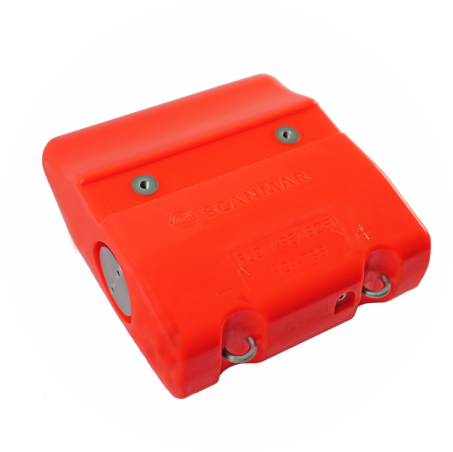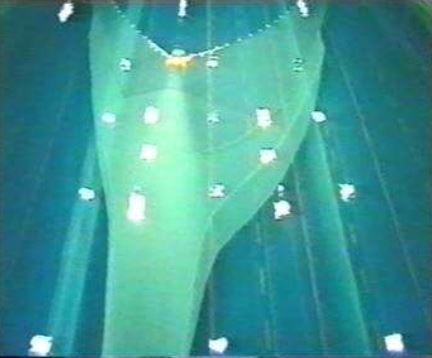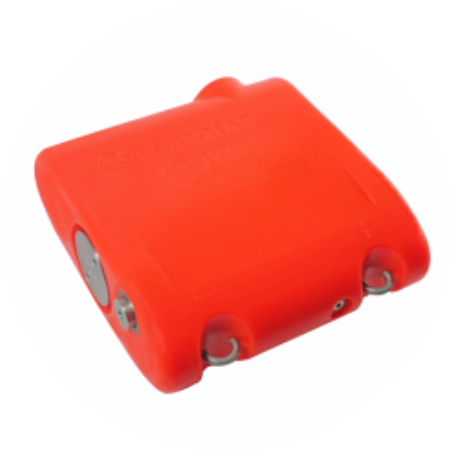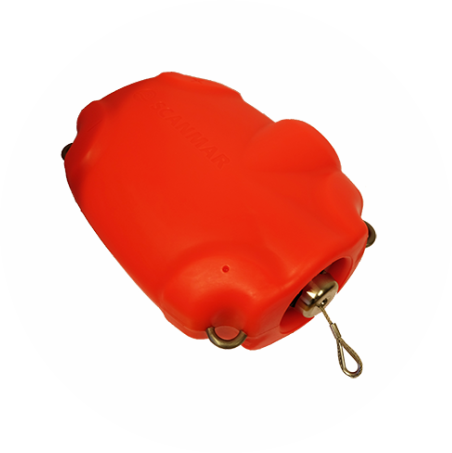Even if this article is called “The history of Scanmar”, it is actually much more; the history of how the idea of Cable Free Catch Control Systems was established, extreme product/technology requirements, the challenges of building up a worldwide network, and not least how to convince and prove to the fishermen that this new product will be profitable to them.
Still, maybe a look at where we are today; the state of our technology, new patents and products that point into the future, is of most interest.
While young fishermen know Scanmar as a world leading company in Cable Free System for monitoring fishing gear and Catch Control – Your Eyes Under Water, the older generations also remember the simple first generation cabinets; the 4000 series, indicating the operation frequency of 40 kHz, and the single functional “Pingers” measuring Catch, Depth and Temperature.
During the almost 40 years Scanmar has existed, most of the fishermen and fishery scientists around the world have learned to know Scanmar, either by using Scanmar, reading about the company and products in Scanmar Info, personal contacts or as a combination of all of these.
However, “a million times” I have been asked how it started, and why the well established companies in Japan, Europe and USA, known for their well performing hydro acoustic sonars and echo sounders, had not succeeded in developing similar products, which has proven to become a must, and an indispensable tool for most of the world’s medium and large trawlers.
Of course, I have my thoughts, but rather than giving you my opinion, I will give you three short articles about how it all begun, developments since the start, and future perspectives.
Why I am doing it this way, is because it is a history of coincidences and strategic thinking, a combination that has proven successful, not only to Scanmar, but as well to vessel owners and skippers that expands their existing systems, and install Scanmar systems when new vessels are acquired. Besides, Scanmar’s history of bringing new advanced technology and products to the market, combined with a series of new patents being awarded, assures that Scanmar’s position will not only be maintained, but strengthened in the future.
The three articles will be:
More often than we think, things happen incidentally or as a result of unforeseen circumstances than deliberate planning. That was also the case with the establishment of Scanmar 40 years ago.
I was born in Oslo, the capital of Norway, and the first years of my adult life I worked with acoustic products, in Norway and in Brussels for one of the biggest companies in the world. When I returned to Norway, I was offered a job in Simrad where I worked for some years, mainly as General Manager for the fishery operation in Horten.
Simrad, which at that time was a well-known company in the fishing industry, and still is, was facing some serious problems due to the overfishing of herring in the North Atlantic Sea. A restructuring had to take place and new technology and products had to be introduced to the fishing fleet in order to increase sales to a profitable level. We succeeded to turn the company around, and especially the relations USSR Ministry of Fisheries was an important factor.
At that time, the most “popular” company in Norway, radio and tape recorder manufacturer Tandberg Radiofabrikk went bankrupt, which caused a lot of problems, not least politically, due to the loss of attractive jobs in an internationally well-known company. I was asked to restructure and reestablish the company, which I accepted.
Shortly after I left, Simrad faced new problems, and started to lay off people, and the prospects did not look good. I was contacted by some of the sales and R&D people that had previously been working for me, and asked if I could establish a new company. It was considered and discussed for a while, and in the autumn of 1980 Scanmar was registered.
The main problem we faced was to decide what products we should develop and manufacture. Of course, we all had experience from the fishing industry; we knew much about hydro acoustics, we had well established contacts with fishing companies all over the world, and due to the newly developed computer technology, and we had many ideas for new products. Of product.
However, there was one big problem; Simrad had signed exclusive contracts with distributors and dealers all over the world, saying that they were not allowed to sell similar products from other manufacturers. That put a stop to most of the ideas we had, but was the factor that initiated our choice
Due to our contacts with fishermen and research institutes we knew that trawl fishing could be highly improved if monitoring various parts of the fishing gear, environmental conditions and fish behavior.
In spite the factum that we knew that there would be extreme challenges, maybe impossible, to develop the technology, we felt that this was a challenge we just had to take, and that was the start of the development of Cable Free Catch Control Systems.
When the decision to develop a Cable Free Catch Control System was taken, numerous critical factors had already been considered. It is far too extensive to go into all of them here, but putting the fisherman in the middle, we knew that quality is everything; bad reception, lost fishing time due to sensor break down, short operating and long charging times, wrong or lack of information etc. would be a disaster, so these problems had to be seriously addressed.
Everybody now knows how we have solved the above mentioned challenges; advanced technology in hydrophones and receiving units, sensor molding technology to protect the electronics and minimize service, and special battery and charging technology for long operation and fast charging.
The problem, of course, is that the fishing fleet is a small market, and R&D is expensive, meaning that good reliable products are expensive.
It took 10 years before other companies understood that there is a big need for monitoring fishing gear, or rather, understood that hydro acoustic transmission of signals from the gear to the vessel was possible. However, they did not realize the quality challenges, and most of the twenty companies that at one time or another, tried to copy Scanmar, has given up, or are focusing on simple systems for smaller vessels.
Even if we in Scanmar, based on how we understood fishing operations, were aware of that advanced sensors like Door Distance, Trawl Eye, Trawl speed, Symmetry and Multifunctional sensors, would be the real important sensors for the fishermen, we first had to start with the simple “Pingers”; Catch, Depth and Temperature. Still, it was difficult for experienced fishermen to see any advantage, before they had actually tried it in their own fishing operation, and that required much travelling worldwide to show how the systems could be used.
Since we believed in the benefit of more advanced sensors, we started already in the mid-eighties to develop the more advanced sensors. Receiving hydrophones and units for the bridge were in place and needed just a little upgrade to handle all sensors. However, at the beginning many fishermen did not understand what underwater currents do to the trawl and fish behavior, both in front of trawl and inside. Now it is common knowledge.
3. PERSPECTIVE
Even the fact is that Scanmar was established almost 40 years ago, and by definition should be a well-established company, which it is, very much is just the same as it was 40 years ago. The production of Receiver units, hydrophones and sensors is running smoothly, but still a large part of the company, including myself, is focusing on new sensors, functions and solutions that will benefit the fishermen.
During all the time Scanmar has worked with the fishermen, there has been lots of challenges on both sides, and in many way one may say that we have developed together. In the beginning most trawling (except pelagic) took place in shallow waters with fairly small vessels. Extended economic zones and fishing in new and unknown areas required more of the fishermen as well as the equipment. Even if there has been a continuous reduction in the world fishing fleet, there has been a fantastic development in catching of new species, new fishing vessels, twin trawl; you name it.
While we in Scanmar has been waiting for the turnaround in fisheries, while old vessels are phased out, we have prepared ourselves for the time to come: We have developed new Multifunctional Net and Door sensors, which also required development of new battery and charging technology. It is incredible how much more efficient this type of sensors are compared to the old, but, of course, sensor power consumption and quick charging technology have to be in place. (We have all heard about “Multifunctional sensors” where only one function can be used at a time, due to power consumption).
Due to our experience, and not the way we build our sensors (molding the electronics), we give 5 years warranty for the SS4 sensors. All functions may be bought at once, or functions may be added later by simple downloads. Free trial license give the fisherman the possibility to try out new functions free of charge.
New SS4 Multifunctional sensors are being developed and will be brought to the market as soon as they are ready for sale.
But the future will bring more: Our work with the fishermen has given us ideas for many new products and functions. Some of them are under development, and the rest have been patented to avoid misuse of Scanmar’s property.
For bigger fishing companies and even for single vessels with large Scanmar systems, we are now seeking a closer cooperation where Scanmar is taking responsibility for the complete Scanmar equipment on board the vessels. This relieves the ship owner of much work and secures that the equipment is always up to date and spare sensors available.
This has become very interesting due to the number of new vessels being built, and, not least, the advanced systems being installed.







